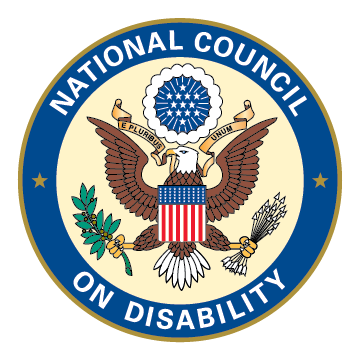NCD report examines ground transportation barriers for Americans with disabilities
FOR IMMEDIATE RELEASE
July 23, 2025
WASHINGTON–Today the National Council on Disability (NCD) issued a report to Congress, the President, and his Administration, about the state of access of ground transportation for millions of Americans with mobility disabilities, finding wheelchair users remain a population “left at the curb” as technology advances.
NCD’s report, Ground Transportation for People with Mobility Disabilities 2025: Challenges and Progress, examines the unique barriers people experience accessing ground transportation options; explores solutions to increase the availability of wheelchair-accessible vehicles (WAVs); and makes recommendations to policymakers on ways to expand transportation options.
The report analyzes barriers to accessing ride hail services such as Uber and Lyft; taxi service; paratransit; shuttle service and rental cars; and autonomous vehicles.
“Most of us rely upon transportation every day without much thought – to get to work, to school, and to visit our friends and family. But for countless people with mobility disabilities, what is a ‘given’ for many of us becomes a landscape of few if any options, and as a result, social isolation, unemployment, and uncertain futures,” said NCD Acting Chair and Vice Chair Shawn Kennemer. “A bipartisan Congress passed, and President George W Bush signed, the ADA 35 years ago this week in part to change this reality, and due to huge shifts in transportation options. We still have a lot of work to do.”
Transportation was one of the key areas of focus for NCD in recommending an Americans with Disabilities Act in its 1986 Toward Independence report and authoring the first draft of the ADA in its 1988 On the Threshold of Independence report.
“My nondisabled peers can access an Uber, Lyft or a taxi within minutes, and go wherever they want to go with little forethought,” said NCD Councilmember Sascha Bittner. “For wheelchair users like me, spontaneous travel still isn’t an option unless you live in one of the few places where there are on-demand wheelchair accessible options or you are able to spend $50,000-$100,000 on an accessible van, she said. “We need equal opportunity.”
A few highlights from NCD’s research findings include:
• Ride hail services currently only provide WAV service in approximately 10 U.S. cities, leaving millions of WAV users without that commonplace, door-to-door option.
• On days that the U.S. Department of Transportation have surveyed households on their travel behavior, two to three times the amount of people with travel-limiting disabilities stayed home and took no trips as did people without disabilities.
• People with travel-limiting disabilities are far less likely to own a vehicle, have access to a vehicle, and to drive a vehicle than their nondisabled counterparts.
• Transit-dependent people often don’t apply for jobs that aren’t accessible by bus, even if they offer better pay and opportunities, keeping them in a cycle of poverty.
• Transit-dependent people miss out on social activities and obligations, preventing formation and maintenance of social networks.
• Disadvantages are generational, with children of transit-dependent people starting life with a deficit in social capital compared to more mobile counterparts.
• About a third of people with disabilities report always or usually having difficulty accessing transportation for spontaneous events.
NCD concludes the report by advancing legislative, regulatory, enforcement, and partnership-based recommendations to address and remove the barriers outlined in the report.
Read the full report at www.ncd.gov.

